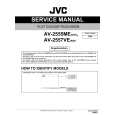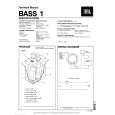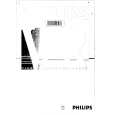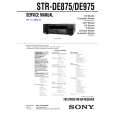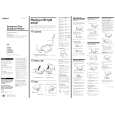|
|
|
Kategorie
|
|
Informacje
|
|
Polecamy
|
|
|
 |
|
|
Dla tego produktu nie napisano jeszcze recenzji!
 ;
Dokładna dokumentacja, pomogła w szybkiej naprawie telewizora. Dziękuję!
 ;
jedyne do czego mogę mieć zastrzeżenie to jakość zdjęć zawartych w przesłanej instrukcji serwisowej ponieważ są fatalnej jakości, praktycznie nieczytelne. tak poza tym jestem zadowolony to jest to czego szukałem.
 ;
Wszystko w porządku.
Instrukcja czytelna i kompletna.
Dziękuję.
all right!
thank you.
 ;
Bardzo dobra instrukcja. Zawiera wszystko co potrzeba, polecam!
 ;
Instrukcja jest OK. Schematy czytelne, opisane niektóre procedury.
Focus/Tracking Gain Adjustment A servo analyzer is necessary in order to perform this adjustment exactly. However, this gain has a margin, so even if it is slightly off, there is no problem. Therefore, do not perform this adjustment. Focus/tracking gain determines the pick-up follow-up relative to mechanical noise and mechanical shock when the 2-axis device operate. However, as these reciprocate, the adjustment is at the point where both are satisfied. � When gain is raised, the noise when 2-axis device operates increases. � When gain is lowered, it is more susceptible to mechanical shock and skipping occurs more easily. This adjustment has to be performed upon replacing any of the following parts : � Optical pick-up � RV503 (Focus gain) � RV502 (Tracking gain) Normally, be sure not to move RV503 (focus gain) and RV502 (tracking gain).
C598 C503 48 C108 TP547
� Focus Gain Adjustment � Procedure : This adjustment is not performed. If focus gain RV503 is turned, set to mechanical center. � Tracking Gain Adjustment � (perform at normal operation)
[MAIN BOARD] (Side B)
1. Place the optical pick-up level, horizontally. (If the optical pickup is not level, the 2-axis device will be weighted and adjustment cannot be done.) 2. Connect the oscilloscope between TP514 (TEO) and TP533 (VC) on the MAIN board. 3. Set the disc (YEDS-18) and Press the ^ (+) key. 4. Turn RV502 slightly clockwise (tracking gain drops) and obtain a waveform with a fundamental wave (waveform has large waves) as in Figure 5-1 . 5. Turn RV502 slowly counterclockwise (tracking gain rises) until the fundamental wave disappears (no large waves) as in Figure 5-2. 6. Set RV502 to the position about 30 °counterclockwise from the position obtained in step 5. If RV502 contact point is more than 90 ° counterclockwise from mechanical center, tracking gain is too high. In this case, readjust from step 4. 7. Press ^ (+) or = keys and observe the 100 track jump waveform. Check that no traverse waveform appears for both ^ (+) or = directions. (See Figures 5-3 and 5-4.) It is acceptable if the traverse waveform appears only now and then, but if it appears constantly raise tracking gain slightly and check step 7 again. 8. Check that there is no abnormal amount of operation noise (white noise) from the 2-axis device. If there is, tracking gain is too high, readjust starting with step 4. The waveforms are those measured with the oscilloscope set as shown below. � VOLT/DIV : 50mV � TIME/DIV : 5mS � Waveform when tracking gain lowered. Fundamental wave appears (large waves).
0V
TP514 (TEO) TP533 (VC)
TP102 FB101 D105 C105
C205
D804
oscilloscope (DC range)
Fig. 5-1 � Waveform when fundamental wave disappears (no large waves).
0V
807 C520
TP306
Q101 Q201 D205
Fig. 5-2 � Waveform when no traverse waveform during 100 track jump. (Brake application is smooth because of adjustment.)
C208 L502
TP302 TP202
FB302
FB201 R521 TP521 TP522TP515TP508
0V
TP507 Q501 C525 R512 TP514 R519 C514 TP503 C501 (TEO) R517 TP509 TP502 TP511 R501 TP533 0 TP534 TP512 32 30 25 C599 R504 (VC) C517 R505 TP523 1 TP506 24 11 C512 IC501 20 C505 TP513 TP504 5 (RFO) C510 C506 17 8 C513 TP540 R549 C504 L508 C571
R502
R503
Fig. 5-3
100 track jump waveform
� Waveform when no traverse waveform during 100 track jump. (Brake application is poor because of adjustment.)
0V
100 track jump waveform traverse waveform
Fig. 5-4
�9�
|
|
 |
> |
|



